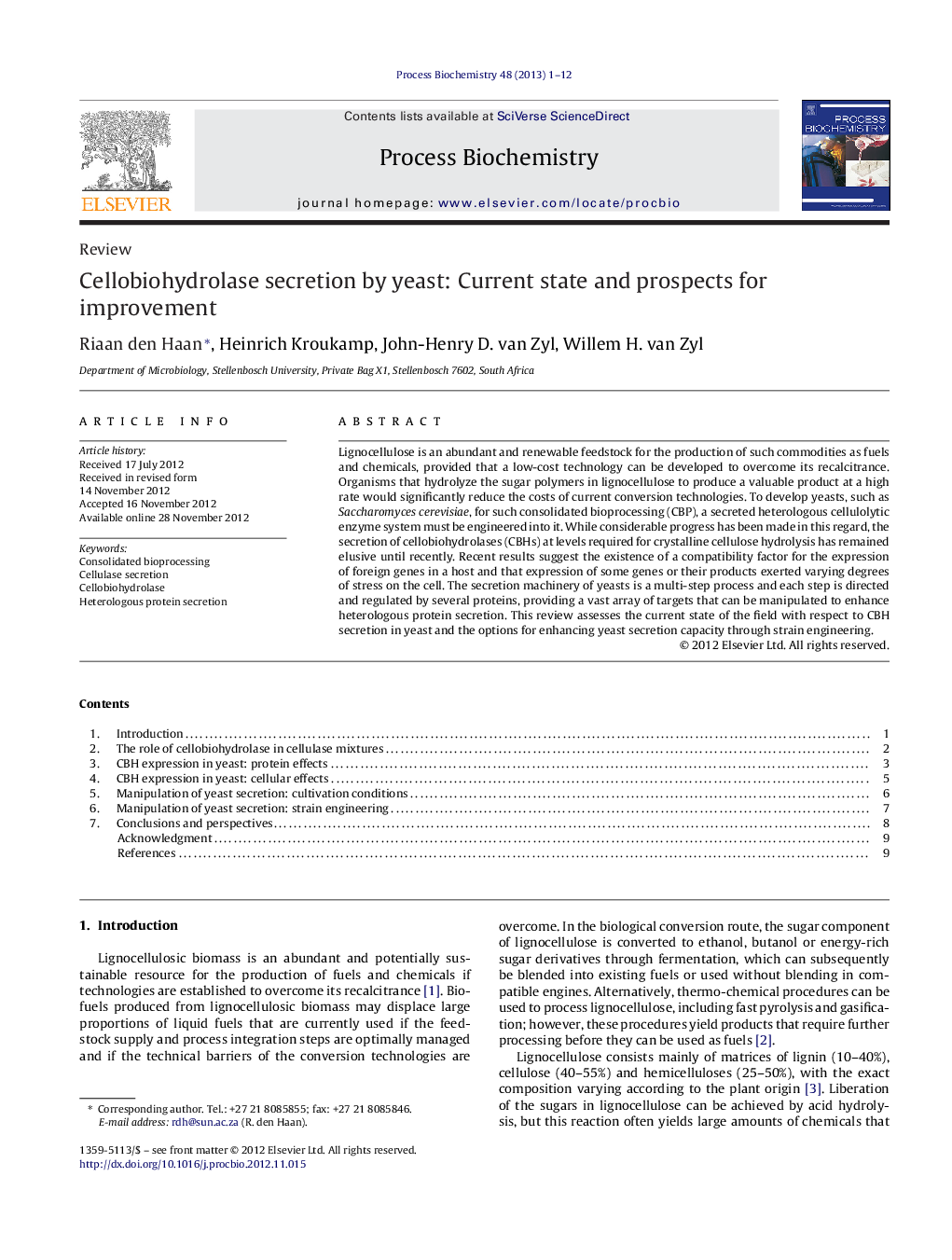| Article ID | Journal | Published Year | Pages | File Type |
|---|---|---|---|---|
| 34841 | Process Biochemistry | 2013 | 12 Pages |
Lignocellulose is an abundant and renewable feedstock for the production of such commodities as fuels and chemicals, provided that a low-cost technology can be developed to overcome its recalcitrance. Organisms that hydrolyze the sugar polymers in lignocellulose to produce a valuable product at a high rate would significantly reduce the costs of current conversion technologies. To develop yeasts, such as Saccharomyces cerevisiae, for such consolidated bioprocessing (CBP), a secreted heterologous cellulolytic enzyme system must be engineered into it. While considerable progress has been made in this regard, the secretion of cellobiohydrolases (CBHs) at levels required for crystalline cellulose hydrolysis has remained elusive until recently. Recent results suggest the existence of a compatibility factor for the expression of foreign genes in a host and that expression of some genes or their products exerted varying degrees of stress on the cell. The secretion machinery of yeasts is a multi-step process and each step is directed and regulated by several proteins, providing a vast array of targets that can be manipulated to enhance heterologous protein secretion. This review assesses the current state of the field with respect to CBH secretion in yeast and the options for enhancing yeast secretion capacity through strain engineering.
► Cellobiohydrolases are key enzymes in cellulose hydrolysis and biomass conversion. ► Expression of cellobiohydrolases in yeasts have met with varying degrees of success. ► Cellobiohydrolases produced in yeast were often aberrant in folding or glycosylation. ► Cellobiohydrolase expression in yeast caused gene dependent cellular stress. ► The yeast secretion pathway can be engineered for cellulase secretion enhancement.
